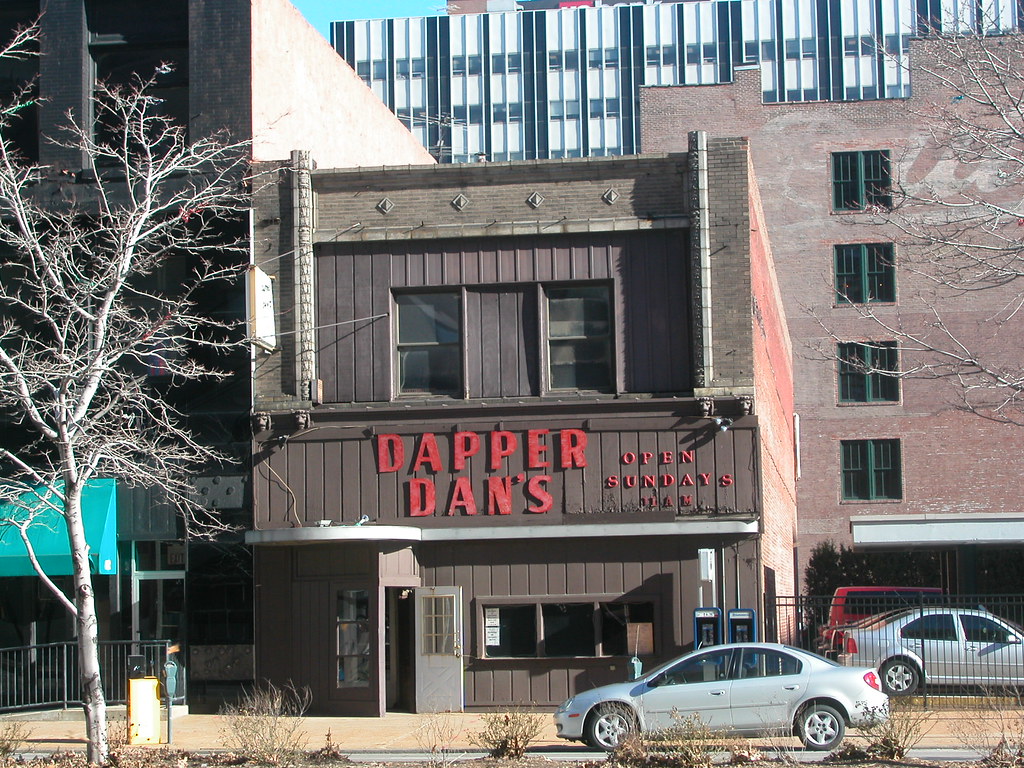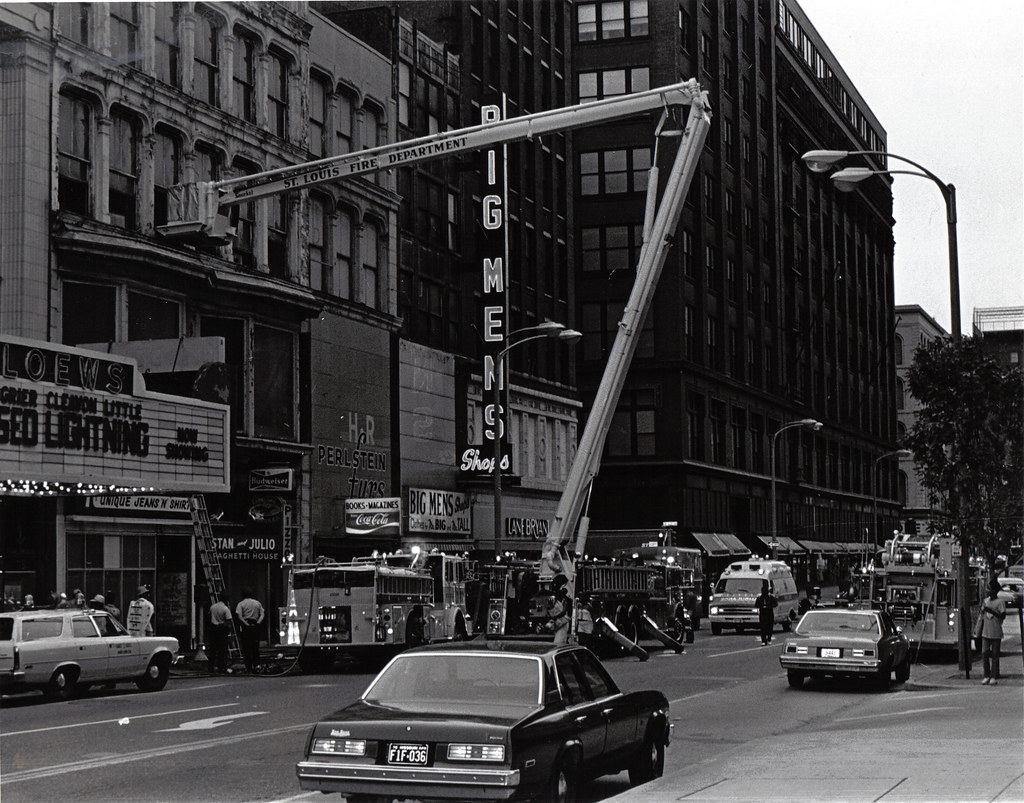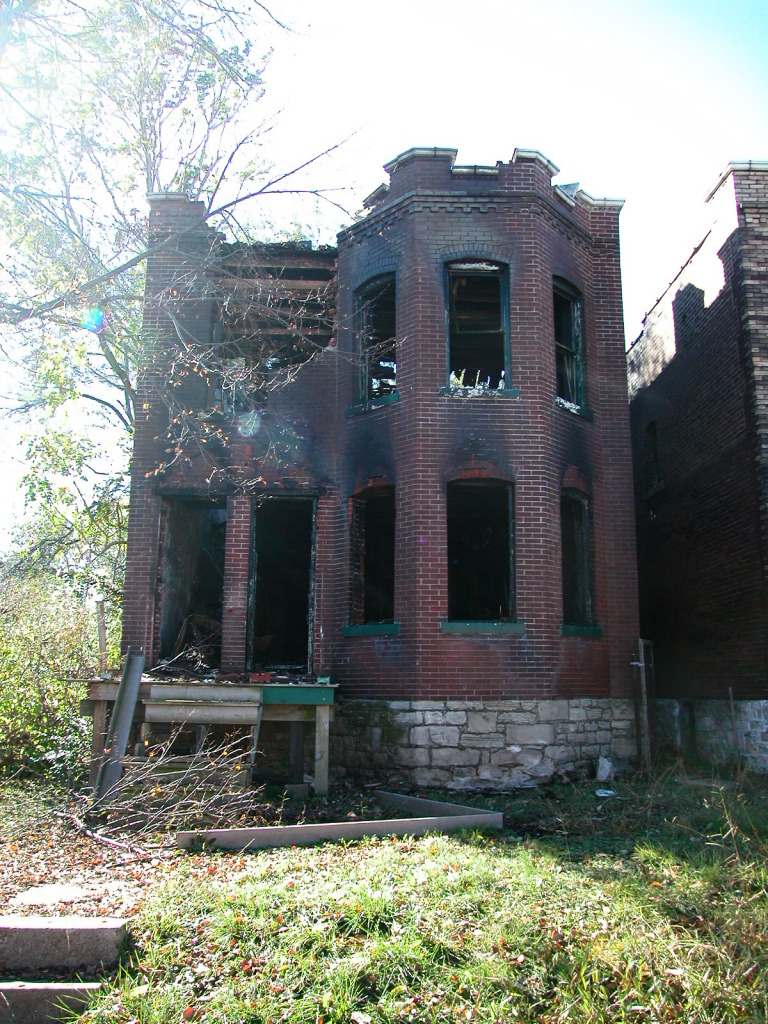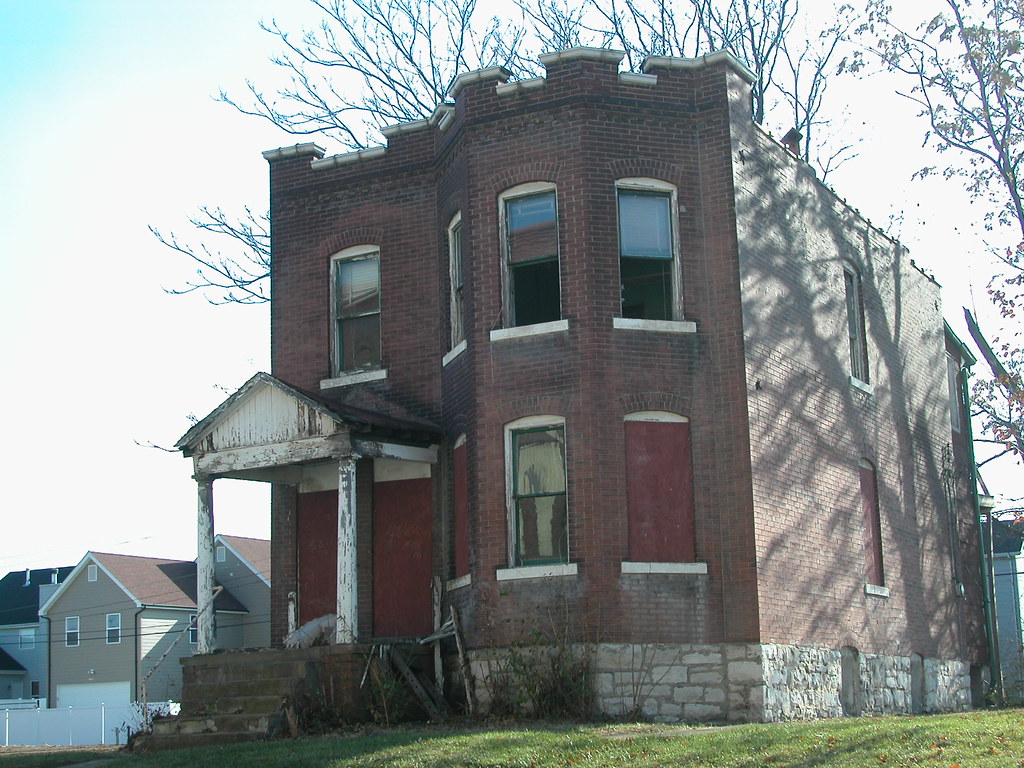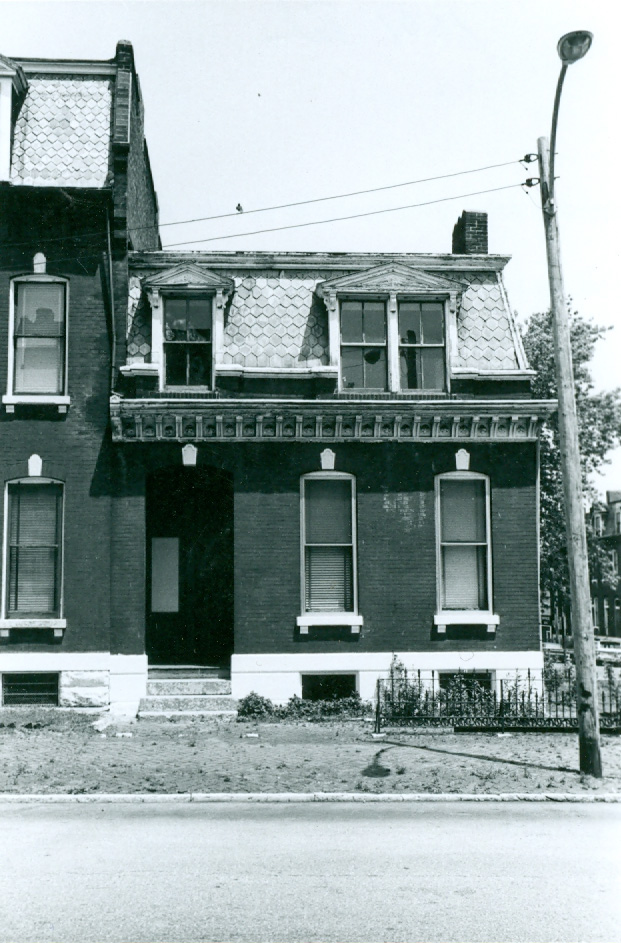by Michael R. Allen
 I frequently pass by this industrial building at 2509 N. Broadway in the north riverfront industrial corridor, and have long wondered about the distinctive stepped south elevation. On that side, the parapet steps up a full floor above the apparent building height to support a chimney. My first assumption was that the chimney was the remnant of a demolished interconnected taller building. That assumption didn’t seem right, though. Time for research.
I frequently pass by this industrial building at 2509 N. Broadway in the north riverfront industrial corridor, and have long wondered about the distinctive stepped south elevation. On that side, the parapet steps up a full floor above the apparent building height to support a chimney. My first assumption was that the chimney was the remnant of a demolished interconnected taller building. That assumption didn’t seem right, though. Time for research.
The 1909 Sanborn fire insurance map (Volume 3, page 52) shows this building alone, with no building standing to the south. The stepped section chimney is part of the building, which Sanborn shows as being a three-story section of the Kraushaar Brass Manufacturing Company. Building permits indicate that the building at 2509 N. Broadway was built in 1904 at a three story height. Since the building was part of an active brass foundry, a destruction of the top story by fire is possible. Several metal-industry related buildings in the north riverfront areas lost top floors to fire. Early processes often resulted in industrial accidents, and we know that heat rises. However, my guess is as likely as simple decapitation of a floor deemed useless for some reason.
My research on Kraushaar Brass Manufacturing is incomplete. Records show that the company was founded by Charles Frederick Kraushaar, a Prussian immigrant born in 1847 who arrived in St. Louis after 1870. Kraushaar started a brass foundry on this block (city block 330, bounded by Broadway, Warren, 9th and Benton streets) in 1873 that expanded in size rapidly. In 1911, when Kraushaar retired, he resided at 3627 California Avenue in south city. His company made a lot of light fixtures, and its products appear in Missouri state government procurement records.
One mystery solved, dozens more created…

